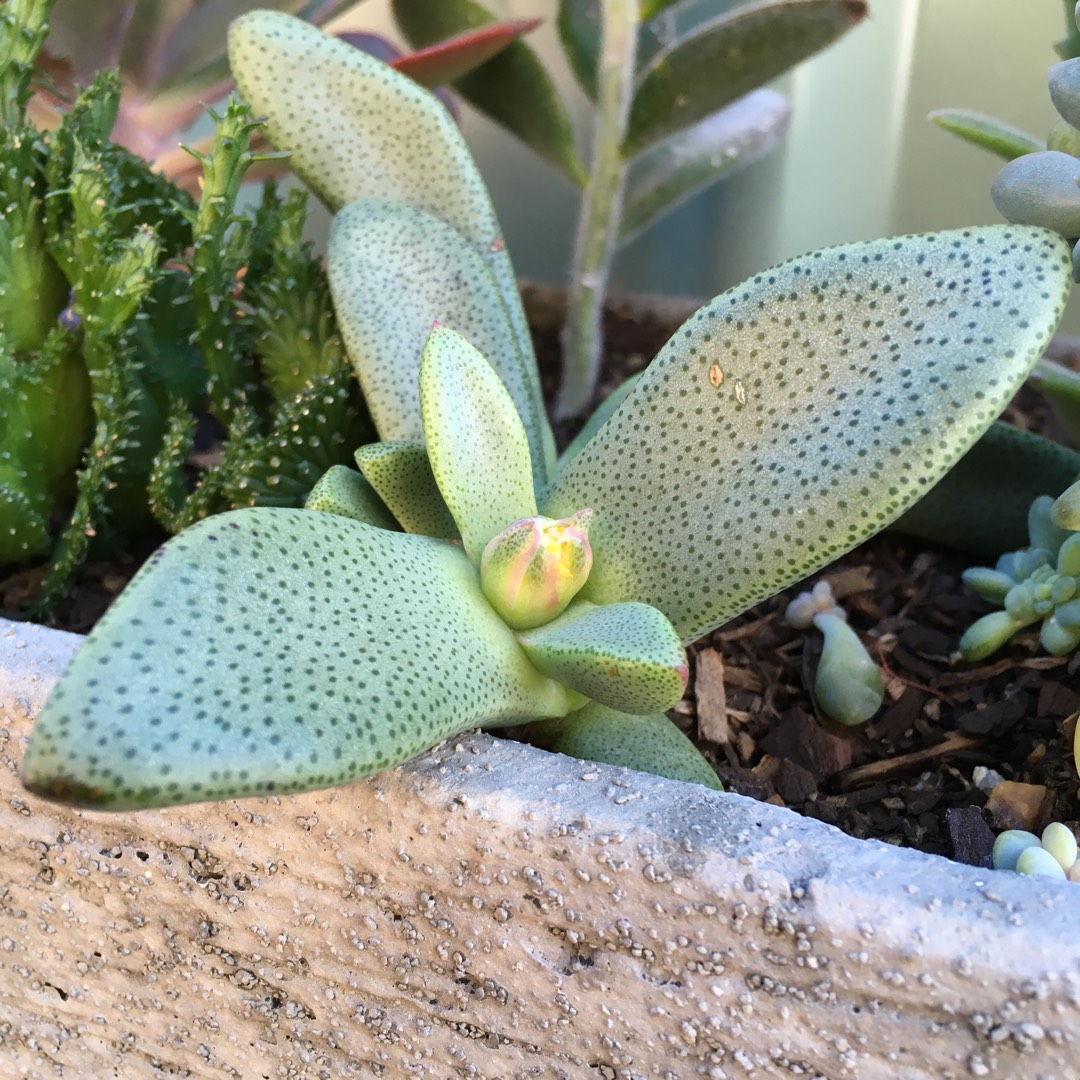
Pleiospilos compactus
Split rock
Pleiospilos is a succulent perennial which can reach a height of 5–8 cm (2–3 in) and a diameter of about 10 cm (4 in). Pleiospilos compactus is another rock “mimic” and very variable species, that never exhibit the extreme mimicry forms of other living rock/stone plants. The daisy-like flowers are yellow-orange, 6–7.5 cm (2–3 in) across, and emerge from the center of the leaves. The flowers are large in relation to the size of the plant. They bloom in the afternoon and close at sunset.
-
Full sun to partial shade
-
Very little water
-
Not Frost hardy
-
Light and free draining
Common name
Split rock
Latin name
Pleiospilos compactus
type
Succulent
family
Aizoaceae
ph
5.0 - 6.5 Acid - Neutral
Plant & bloom calendar
-
Best time to plant
full grown dimensions
 0.10 M
0.08 M
0.10 M
0.08 M
Pleiospilos compactus
Pleiospilos is a succulent perennial which can reach a height of 5–8 cm (2–3 in) and a diameter of about 10 cm (4 in). Pleiospilos compactus is another rock “mimic” and very variable species, that never exhibit the extreme mimicry forms of other living rock/stone plants. The daisy-like flowers are yellow-orange, 6–7.5 cm (2–3 in) across, and emerge from the center of the leaves. The flowers are large in relation to the size of the plant. They bloom in the afternoon and close at sunset.
Planting
From Early Spring TO Early Spring
Living stones thrive best in a coarse, well-drained substrate. Any soil that retains too much water will cause the plants to burst their skins as they over-expand. Plants grown in strong light will develop hard strongly coloured skins which are resistant to damage and rot, although persistent overwatering will still be fatal. Excessive heat will kill potted plants as they cannot cool themselves by transpiration and rely on staying buried in cool soil below the surface.
Propagation
From Early Spring TO Early Spring
Propagation of Living stones is by seed or cuttings. Cuttings can only be used to produce new plants after a plant has naturally divided to form multiple heads, so most propagation is by seed. Living stones can readily be pollinated by hand if two separate clones of a species flower at the same time, and seed will be ripe about 9 months later. Seed is easy to germinate, but the seedlings are small and vulnerable for the first year or two, and will not flower until at least two or three years old.













